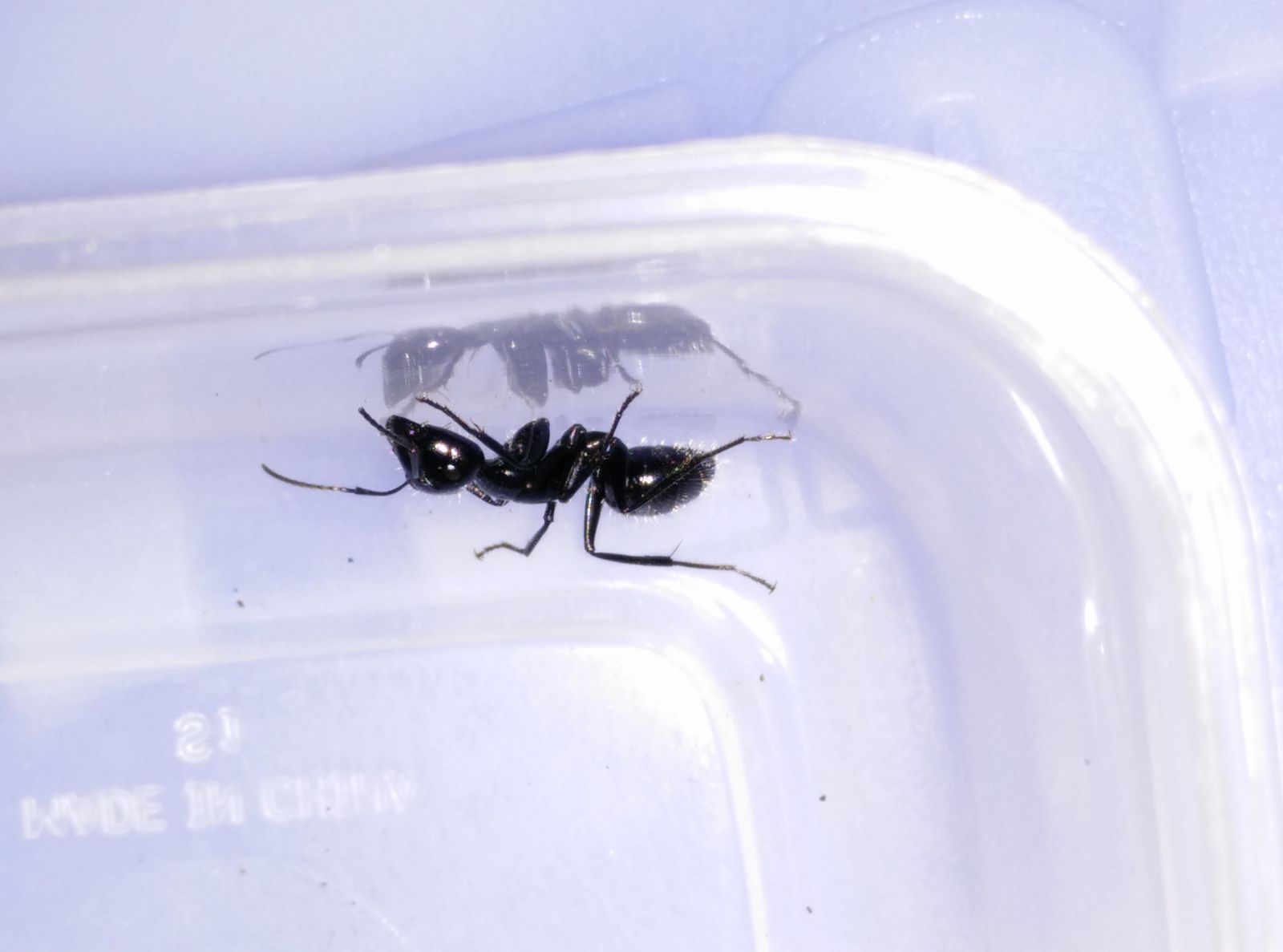I assumed this was Camponotus vicinus and forgot about it until I was looking up some C. vicinus and it appears their workers are yellow, or at least not jet black. This one was completely black, about 10mm long. Any ideas?


I assumed this was Camponotus vicinus and forgot about it until I was looking up some C. vicinus and it appears their workers are yellow, or at least not jet black. This one was completely black, about 10mm long. Any ideas?

Camponotus vicinus, Crematogaster 1, Crematogaster 2, Formica francoeuri, *, *, Myrmecocystus testaceus, Novomessor cockerelli, Pheidole hyatti, Pogonomyrmex californicus, Pogonomyrmex rugosus, Solenopsis invicta
C. laevigatus maybe?
Camponotus vicinus, Crematogaster 1, Crematogaster 2, Formica francoeuri, *, *, Myrmecocystus testaceus, Novomessor cockerelli, Pheidole hyatti, Pogonomyrmex californicus, Pogonomyrmex rugosus, Solenopsis invicta
C. laevigatus without a doubt. Let me guess, this was found on a giant downed pine tree, possibly during the day?
C. laevigatus without a doubt. Let me guess, this was found on a giant downed pine tree, possibly during the day?
That was my thought after doing some reading and seeing the hairs. Close enough, on a stump during the day. ![]()
Aside from the clypus, are there any distinguishing features between C. vicinus and C. quercicola? I'm now wondering what the queen I found is and I can't seem to get a good look at her clypus.
Camponotus vicinus, Crematogaster 1, Crematogaster 2, Formica francoeuri, *, *, Myrmecocystus testaceus, Novomessor cockerelli, Pheidole hyatti, Pogonomyrmex californicus, Pogonomyrmex rugosus, Solenopsis invicta
I think the head on C. quercicola is a lot larger. From what I have seen, C. vicinus have relatively small heads, and they don't stick out past the sides of their thorax. The C. quercicola I have, as well as my C. laevigatus queens have big heads that stick out farther than the sides of their thorax. Also, C. quercicola eggs look like those of C. laevigatus--really elongated; almost like cricket eggs.
0 members, 1 guests, 0 anonymous users